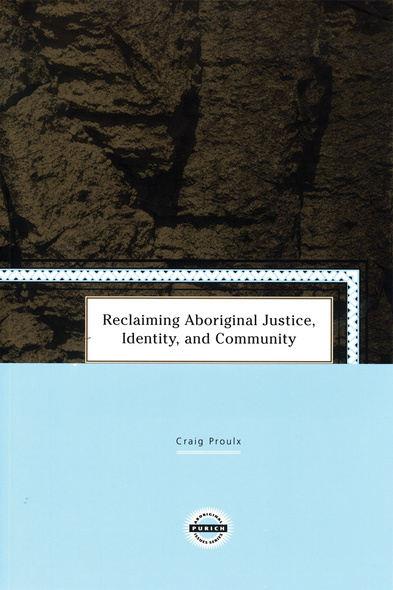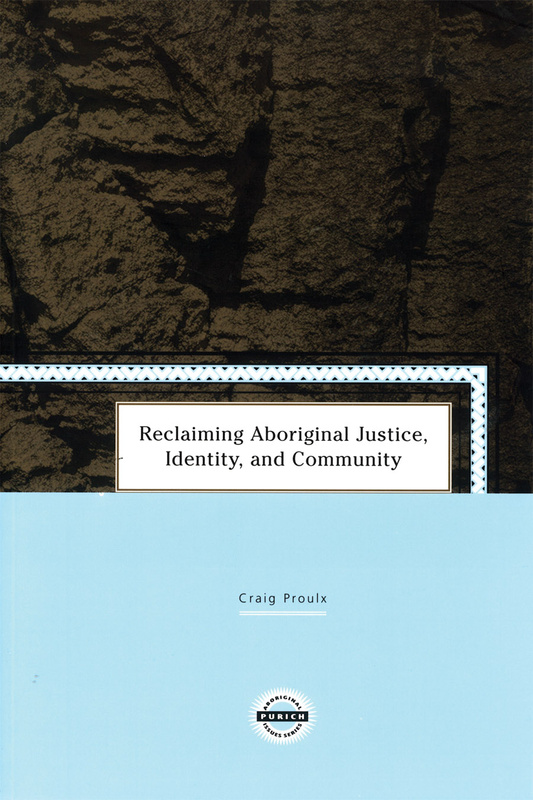Our shopping cart is currently down. To place an order, please contact our distributor, UTP Distribution, directly at utpbooks@utpress.utoronto.ca.
Justice for Aboriginal peoples in an urban context is a complex issue, which should involve consideration of healing, tradition, and community, but rarely does. In his analysis of justice issues facing urban Aboriginals, Proulx pays particular attention to the situation of Aboriginal peoples in Canada, and how the current justice system has failed them. He looks at alternatives to the current system, examining in detail the Community Council Project (CCP), an Aboriginal-run diversion program in Toronto. The analysis of the CCP shows how effective, culturally appropriate, alternative justice mechanisms can provide justice for those not well served by the current system. Describing and analyzing an alternative way of thinking about crime and justice is at the heart of this timely and far-reaching book.
Proulx shows how justice, healing, and community intersect, drawing on the example of the CCP. He discusses what constitutes the Aboriginal community in Toronto, and how the CCP is playing an important role in shaping and defining the community. Among other issues addressed in the book are: crime causation; Indigenous justice knowledge and practice; healing; changes in tradition and culture; and personal and community ownership and empowerment.
This book is an important follow-up to an earlier book in Purich's Aboriginal Issues Series, Justice in Aboriginal Communities: Sentencing Alternatives (Purich Publishing, 1998). This book will be of interest to social scientists, criminologists, legal professionals, policy makers, and legislators, and others who seek to understand how justice policies and practices can positively or negatively affect urban Aboriginal lives.
1.Introduction
The CCP Diversion Program
Background
Guide to the book
2.Over-representation and New Justice Responses
Over-representation and Explanations for It
Program Responses to Over-representation
Self-Government and New Justice Program Debates
Recidivism
3.Healing, Tradition, and Justice Talk
Healing
Tradition
Justice Definitions
4.Establishment and Structure of the CCP
Protocol between Aboriginal Legal Services of Toronto and the Toronto Crown Attorney's Office
Elders and Traditional Teachers Gathering at Birch Island, August 27 - 30, 1991
The Structure of the CCP
5.CCP Clients and Council Members
Clients and Stereotypes
Identity Issues
Life on the Street
Clients and the Justice System
Clients and the Police
Clients and the Courts
Clients and Judges
Clients and Jail and Prison
The Overall Client Context
6.The CCP: The New Context and an Ideal Hearing
Diversion Defined
The New Context
Client Hearings: The CCP Process Revealed
The CCP Ideal
Opening Up the Client
7.Bill's Hearing: Case Study and Analysis
A Representational Issue
Bill's Hearing
"Opening" Bill
The Pre-decision Council Member Discussion
The Decision
Post-hearing Issues
8. Cultural Transformation Through Justice Practice
Identity Restoration or Transformation
Pan-Aboriginal Identity and Healing
Legislative, Judicial, and Anthropological Discourses and Practices: Context, Healing, Meaning, and Identity
Transformation: Connecting Self-government, Healing, and Identity
The Intersection of Justice Practices, Identity, and Healing and Its Relevance to Government, the Formal Justice System, and Anthropology
9. Community in the Making
Rethinking Community
Definitional Quandaries
Problems with Spatial Community Definitions
Conceiving and Practising Community
Discursive Community
Organizations and Events Constitute Community
Responding to Social Problems Defines Community
The CCP Builds Community
Community in the Making
10. Summary and Conclusions
Appendix A: Community Council Statistics
Appendix B: Interview Questions Administered to CCP Clients and Council Members
Notes
Bibliography
Index





